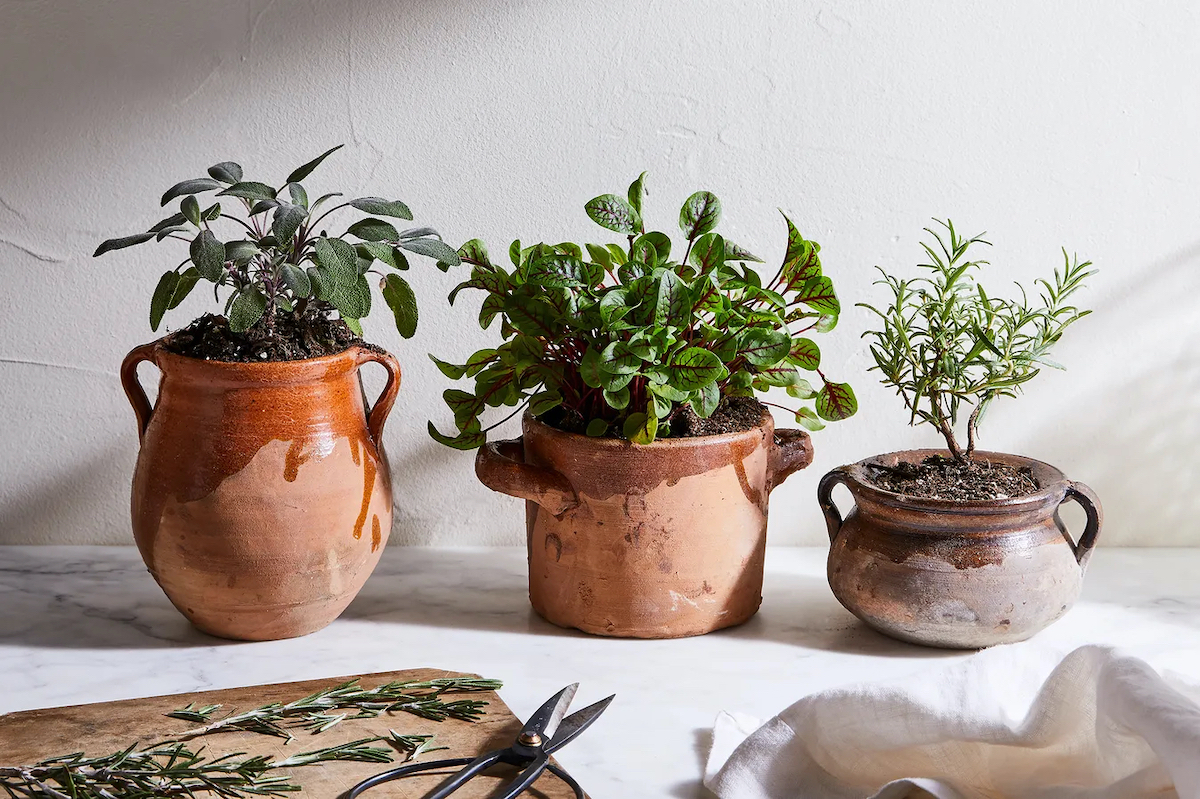This past year has seen a surge of moves to the suburbs, time spent on balconies and in yards, and home cooking, which inevitably also led to people thinking about growing their own food. Growing herbs and vegetables doesn’t have to take up an entire yard or require a farmer’s touch, either. Everyday people (you!) can successfully feed themselves fresh homegrown produce, no matter how big or small the outdoor space.
I checked in with two plant experts, Nadia Hassani, plant author and Penn State Master Gardener, and Tim McSweeney, Food52 design director and backyard farmer extraordinaire, to find out the best starter produce for growing in containers. But first, a couple things to keep in mind:
Both Nadia and Tim reminded me that growing in containers means much more frequent watering (as opposed to planting in the ground) to prevent the roots from drying out, as well as frequent fertilizing (Tim says a good liquid seaweed or comfrey tea will do), so be prepared to carefully tend to your individual salad ingredients as they reach maturity. Pots can also overheat (especially the black plastic ones), so doubling down on each container is a smart idea to provide the plants with insulation.
If you’ve never grown vegetables, something else you may not know is that they need pollination, and in order for this to occur, you’ll need to lure some pollinators (bees, butterflies, and hummingbirds) into your garden to do the dirty work for you. The best way to do this is to pepper (ha) in some pollinator plants, like goldenrod, purple coneflower, or sunflowers, along with your vegetables.
Lastly, it’s probably best to plant a variety of plants, so if one doesn’t work out, you’ll have other successes to fall back on. Now, onto all the edible things you can grow:
* * *
1 Gallon Containers
1. Lettuce
Nadia suggests a whole window planter box for lettuces, as you won’t be able to fit more than one in a gallon container, but imagine reaching out of your window to pluck some fresh romaine for a Caesar salad? Incomparable.
2. Herbs, of course
Basil, parsley, cilantro, dill, chives, you name it — herbs are a great choice for first-time edible gardeners. If you don’t cut all the herbs and let them go to bloom, you create attraction for pollinators and also end up with fragrant, edible flowers (chive blossoms, for example, are delicious).
3. Edible flowers
Adorable for plating and quite delicious in a number of applications, edible flowers provide both a source of sustenance and a gorgeous, aromatic environment for you and the rest of your plant children.
4. Spinach
Similar to lettuce, spinach (and many leafy greens, Nadia adds, for that matter) will do well in containers. Spinach and feta omelets all summer, y’all.
* * *
3 to 5 Gallon Containers
5. Tomatoes
The poster child for balcony plants, tomatoes are a perfect addition to any small-space vegetable garden.
6. Mini Eggplant
While full-sized eggplants would be a bit of a pain to grow in containers, Nadia recommends a mini version, like fairy-tale eggplants, which are specially grown for small-container gardening. You’ll be nailing a fresh-from-the-garden baba ghanoush in no time.
7. Kale
Hardy, chewy, leafy, crunchy kale — not only does it make any dish feel complete, it’s also relatively easy to grow yourself; you’ll just need 3-to-5-gallon containers. Another option Nadia suggested is kalette, a delightful little crossbreed between kale and Brussels sprouts.
8. Hot Peppers
Good news for small-space gardeners: “Hot peppers actually like their roots constrained,” Tim says, “so they don’t get quite as bushy. But to compensate for their restriction, they kick out more fruit, i.e., peppers.” More peppers, please!
9. Swiss Chard
Hey again, leafy green! With lettuces, spinach, and kale already, your table and smoothies are going to be full of fibrous, iron-rich goodness.
10. Cucamelons
A viral little wonder, cucamelons (which also go by the names Mexican sour gherkins or mouse melons) aren’t actually melons at all: They’re in the cucumber family, but with a tangier, more citrusy flavor. Nadia advises that they can be finicky from seed, though, so it’s best to look for a seedling at a nursery and provide them a trellis to grow up onto.


